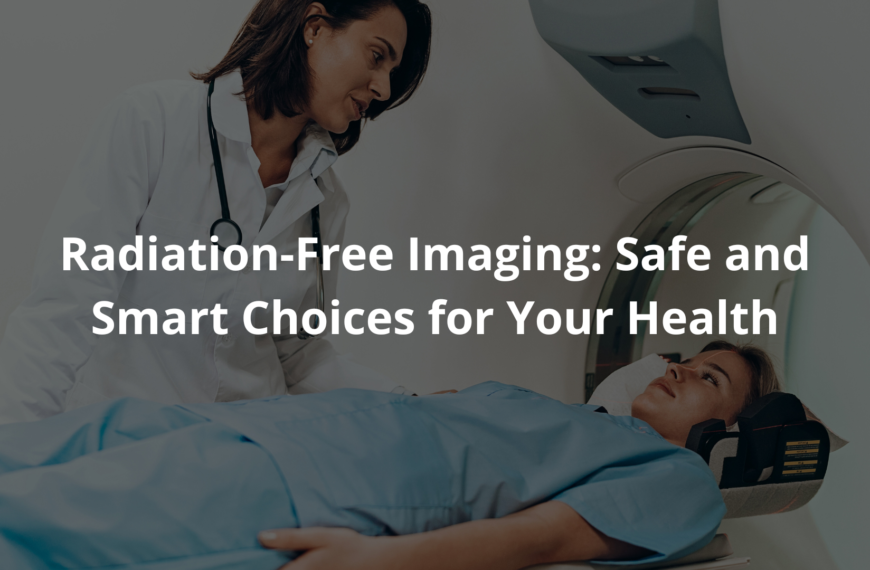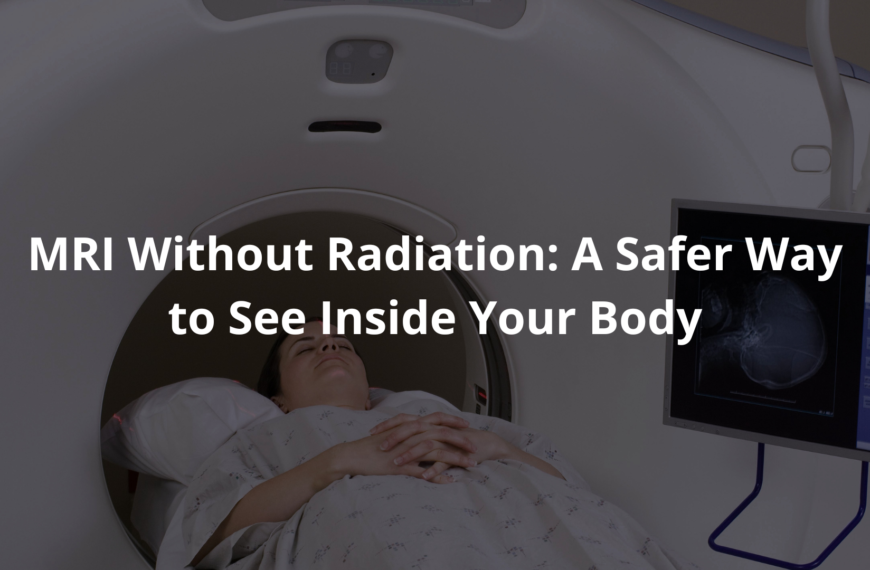This article explores fluoroscopy alternatives that reduce radiation exposure while ensuring accurate diagnoses. Learn about innovative imaging techniques!
Fluoroscopy alternatives are increasingly important. These imaging options allow doctors to see inside the body with less radiation. Ultrasound uses sound waves, while MRI (magnetic resonance imaging) uses magnets, both avoiding radiation exposure. The choice depends on the diagnostic need.
Some alternatives might not visualise bones as effectively, yet are better suited for soft tissue imaging, such as ligaments. Finding safer, effective methods is the aim of modern medicine. If you’re concerned about radiation, be sure to inquire about these options, and keep reading to learn more.
Key Takeaway
- There are many ways to get medical images without using radiation.
- Techniques like ultrasound and MRI are safe and effective.
- New technologies are being developed to make imaging even safer.
Magnetic Resonance Imaging (MRI)
MRI scans – they’re something else, aren’t they? Makes a person wonder how those fellas figured out how to use magnets to look inside us.
Instead of using X-rays like fluoroscopy, MRI machines use magnets and radio waves. Radio waves, can you believe it? The outcome is images, detailed ones, of the inside of the body, like the heart or brain. Doctors in Australia use MRIs to check blood vessels for blockages and even to treat tumours with pinpoint accuracy.
Here’s why they’re a winner in many cases:
- No radiation: That’s the biggest thing, really. No need to worry about overexposure.
- Soft tissue detail: MRI are great for seeing soft bits inside us. You can really see the heart and brain clearly.
MRI technology is expensive, so maybe not every hospital has one. But they are becoming more common, because they provide great information about the human body. If a doctor suspects something is wrong with the soft tissues, there might be an MRI machine on the way. If that’s the case, trust the doctor’s advice. [1]
Ultrasound
Ultrasound, it’s a curious name when you think about it; beyond the range of our hearing, yet it lets us see inside. And it’s not just for expecting parents (though seeing the little tacker on the screen is special, no doubt).
The machine sends high-frequency sound waves into the body, those waves bounce back and create pictures in real time. Amazing isn’t it? Doctors use it for a lot. Here’s a couple things:
- Checking on babies: Obvious one. But it’s not just a peek-a-boo. They actually make sure the baby is developing as it should.
- Helping with nerve blocks: When they need to numb a certain area before a procedure. It’s quite a clever technique that guides the needle.
What’s great about ultrasound is that it’s portable. Meaning they can wheel the machine right into the hospital room. That is so useful when a patient can’t be moved easily. Plus, same with MRI, no radiation! Making it perfectly safe for everyone, especially kids, who are sensitive. The doctor might use ultrasound, if that happens, there is nothing to worry about.
3D Electroanatomic Mapping (EAM)
Credits: Structural Heart Disease Australia
3D Electroanatomic Mapping, sounds like something from a science fiction film, but it’s being used right now to fix hearts. Who would have thought. It’s like giving the doctor a GPS for the inside of your chest.
It lets doctors see the heart in three dimensions, giving them a better understanding of the organ. What does this result in? Well, they can treat things like arrhythmias (irregular heartbeats, that is) without having to use fluoroscopy. A catheter is placed in the heart to create a map.
Here’s how it helps:
- Better Accuracy: Seeing the heart in 3D allows the doctor to place devices with more precision.
- Less Radiation: Because they don’t need fluoroscopy, the patient isn’t exposed to radiation.
The Royal Australian and New Zealand College of Radiologists, they encourage the use of technology such as these mapping systems so patients can receive care without unnecessary risk. If the doctor suggests 3D mapping, it could mean a safer procedure. Because the doctor can see exactly where they are going, and that matters. [2]
Ghost Imaging
Ghost Imaging; a spooky name for something so helpful, the Australian National University are tinkering with it. It might sound like something out of a ghost story, but its more like a glimpse into the future of medical imaging.
The researchers are using low doses of X-rays and patterned light to create images. Using low does, can reduce radiation exposure! By up to 99%! That’s a big deal, especially when it comes to screenings like those for breast cancer. The way ghost imaging works is different; instead of directly capturing the X-rays, it measures changes in the patterned light. These changes are used to create an image. Clever!
Here’s what makes it so promising:
- Low Radiation: This may reduce the risk of long-term health problems.
- Safer Screenings: Regular screenings can become much safer.
It’s still being developed, so you won’t find it at the local clinic just yet. But the idea that we can get clear images with hardly any radiation, that’s a future worth hoping for. If researchers succeed with this, a lot more people will be safer.
RANZCR Standards and Regulatory Oversight
The Royal Australian and New Zealand College of Radiologists, RANZCR, they are the gatekeepers of safe imaging down here. They don’t mess around. One has to wonder how long they have been around.
The RANZCR sets rules, strict ones, to make sure everyone is doing things right and that the images are safe and helpful. They like to see doctors and radiologists working together. For instance, when a doctor is thinking about ordering an imaging test, the radiologists are right there to help them figure out which one is the best fit.
Here’s why this matters:
- Proper test selection: Radiologists have special training; they understand which imaging method is the best for which situation.
- Patient Safety: By choosing the right test and adjusting the settings, the patient gets the information they need without too much risk.
This partnership of medical imaging is more than protocol; the system puts patients first. If a doctor orders an imaging test, one can rest assured that folks with expertise are making certain it’s safe and appropriate. These imaging regulations ensure that the doctors are doing all they can.
Adoption Challenges and Future Directions

Even with all these great tools, there’s a bit of a snag; MRI machines cost a pretty penny. Not every hospital or clinic can afford one. So, if you live out in the bush, you might not have access to the same fancy imaging options as someone in Sydney. It is not always fair.
Some places might have fewer MRI machines, meaning longer waiting lists for patients. But it’s not all doom and gloom. The RANZCR are trying to fix this imbalance.
Here’s what they’re doing:
- Telemedicine: Using technology to connect doctors and patients in remote areas. This way, a specialist can review images even if they’re miles away.
- Training Programs: Giving doctors the skills they need to use imaging technology properly, no matter where they are.
And then there are those new technologies, like ghost imaging. The hope is that this tech will come to fruition. If the cost comes down, more folks can receive the care they need.
FAQ
What are non-ionising imaging techniques and why are they preferred over fluoroscopy?
Non-ionising imaging techniques don’t use harmful rays like fluoroscopy does. These include ultrasound, magnetic resonance imaging, and echocardiography. They’re safer because they don’t raise your cancer risk. Doctors now use these radiation-free imaging methods, especially for people who need lots of scans, pregnant women, or kids. These methods have gotten much better lately, giving good pictures without the risks.
How does diagnostic ultrasound work as a fluoroscopy alternative?
Diagnostic ultrasound uses sound waves instead of radiation to see inside your body. A small handheld device sends sound waves that bounce off your organs to make pictures on a screen. It’s completely radiation-free, making it great for pregnant women and children.
Point-of-care ultrasound brings this tech right to your bedside. Ultrasound-guided procedures are now common for many treatments that once needed fluoroscopy. Contrast-enhanced ultrasound makes pictures even clearer by using tiny bubbles injected into your blood.
What makes MRI-guided interventions different from traditional fluoroscopy?
MRI-guided interventions use magnets and radio waves instead of radiation during medical procedures. Magnetic resonance imaging shows soft tissues really well, letting doctors see things X-rays can’t show. Unlike fluoroscopy, MRI doesn’t use harmful rays, so it’s safer for long procedures.
Newer MRI machines are more open, making it easier for doctors to work while scanning. Special types like functional MRI, diffusion-weighted imaging, and dynamic contrast-enhanced MRI give extra info about how tissues are working.
How are 3D electroanatomic mapping and intracardiac echocardiography changing heart procedures?
3D electroanatomic mapping makes detailed pictures of your heart’s electrical system without radiation. This tech helps doctors see electrical patterns and find problem spots. When used with intracardiac echocardiography (a tiny ultrasound camera put inside the heart), doctors can do complex heart procedures with little or no fluoroscopy.
These fluoroscopy-free techniques work great with cardiac MRI guidance during heart treatments. Together, they’ve hugely cut down radiation for both patients and doctors during long heart procedures.
What image-guided interventions can be done without fluoroscopy?
Many minimally invasive procedures now use options without radiation or with low-dose X-ray alternatives. These include ultrasound-guided procedures for taking tissue samples or draining fluid; MRI-guided interventions for treating cancer; and optical tracking in medical imaging to guide tools exactly.
Advanced visualisation techniques combine different scan types through image fusion technology. Electromagnetic tracking systems follow tools inside your body without constant imaging. Non-fluoroscopic catheter navigation systems are changing how doctors do complex blood vessel procedures. These keep accuracy high while cutting radiation.
What medical imaging innovations are reducing radiation exposure?
New medical imaging innovations focus on radiation exposure reduction while keeping picture quality good. Ghost imaging technology uses special maths to make clear images with very little radiation. Real-time 3D imaging gives detailed views without repeated scans.
Computed tomography alternatives like magnetic particle imaging could offer 3D pictures without radiation. AI-powered diagnostic imaging and machine learning in medical imaging help computers make poor images better. Deep learning image reconstruction can create good pictures from much less radiation, making procedures safer.
How are augmented reality and virtual reality changing image-guided procedures?
Augmented reality in medical imaging puts digital info over real views, helping doctors “see through” to find hidden parts. Virtual reality guided procedures let surgeons practice tricky operations before the real thing. These technologies boost image-guided therapy by turning flat images into 3D models you can interact with.
They work well with robotic-assisted imaging systems for better accuracy. For paediatric imaging alternatives, these cool technologies can make procedures less scary for kids. By mixing various safe diagnostic procedures with these viewing tools, doctors can do complex work more confidently with less radiation, showing real interventional radiology advancements.
Conclusion
Looking at alternatives to fluoroscopy is a good thing, safer medical imaging is important. Methods such as MRI and ultrasound offer useful options, they also don’t have all the radiation risk. Organisations like RANZCR ensure imaging is safe and have regulations. So imaging is more focused on the patient. If one needs imaging, asking the doctor about these alternatives is a good idea.
References
- https://www.arpansa.gov.au/sites/default/files/documents/2024-05/patienthandout.pdf
- https://pmc.ncbi.nlm.nih.gov/articles/PMC7925460/




